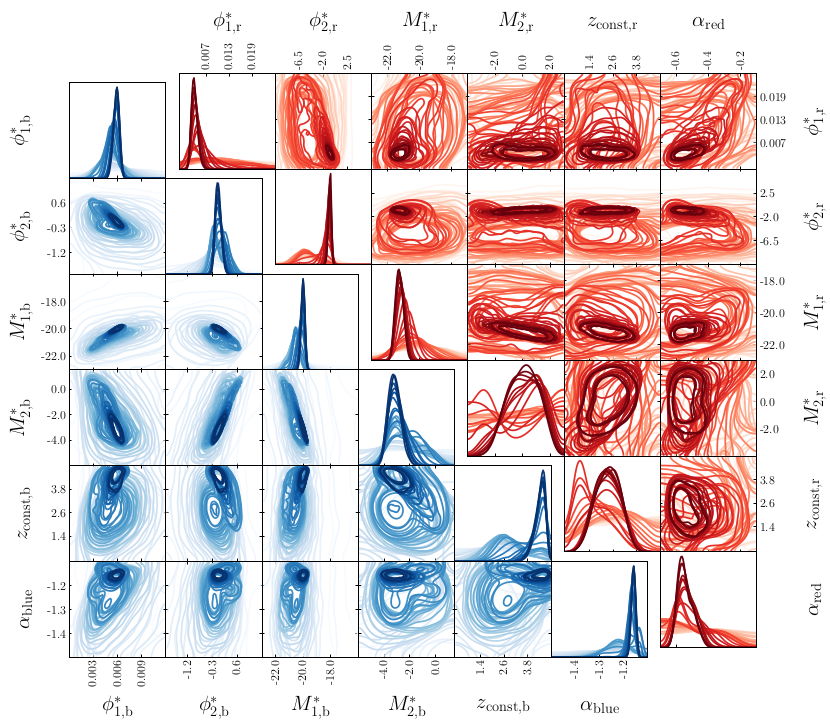GalSBI

GalSBI is a phenomenological galaxy population model designed for cosmological applications using simulation-based inference. It combines analytical parametrizations of galaxy properties with forward-modeling techniques. The parameters of the model are constrained by comparing simulated astronomical images with observed data. The images are simulated with UFig (see https://cosmology.ethz.ch/research/software-lab/ufig.html) and include all relevant instrumental, observational and source extraction effects. The constrained model can generate realistic astronomical images which can be used for calibrating shape measurements or evaluating the impact of various systematics, such as source blending. Performing source extraction on these images, we can provide an accurate description of the galaxy distribution in the real images, including their redshift distribution.
GalSBI is fully open-source, with the accompanying Python package, galsbi, offering an easy interface to quickly generate realistic, survey-independent galaxy catalogs.
The inference is performed using an interative implementation of Approximate Bayesian Computation (ABC). The convergence for the luminosity function parameters for red and blue galaxies is shown below on the left.. The constrained model generates realistic distributions matching the observations well in magnitudes, sizes and colors as illustrated in the plot on the right.


Code release and documentation
The software can be installed easily via the command line using pip (see .
Publications
The first public release of GalSBI is described in Fischbacher et al., 2024 (external page https://arxiv.org/abs/2412.08701) and the code release in Fischbacher et al., 2024 (external page https://arxiv.org/abs/2412.08722). If you use GalSBI for your research, please cite these papers.
The GalSBI framework was developped over many years. The most important milestones are presented in these publications:
- Fischbacher et al. (2024): external page GalSBI: Phenomenological galaxy population model for cosmology using simulation-based inference
- Moser et al. (2024): external page Simulation-based inference of deep fields: galaxy population model and redshift distributions
- Tortorelli et al. (2021): external page The PAU Survey: Measurement of Narrow-band galaxy properties with Approximate Bayesian Computation
- Tortorelli et al. (2020): external page Measurement of the B-band Galaxy Luminosity Function with Approximate Bayesian Computation
- Kacprzak et al. (2020): external page Monte Carlo Control Loops for cosmic shear cosmology with DES Year 1
- Herbel et al. (2018): external page The redshift distribution of cosmological samples: a forward modeling approach